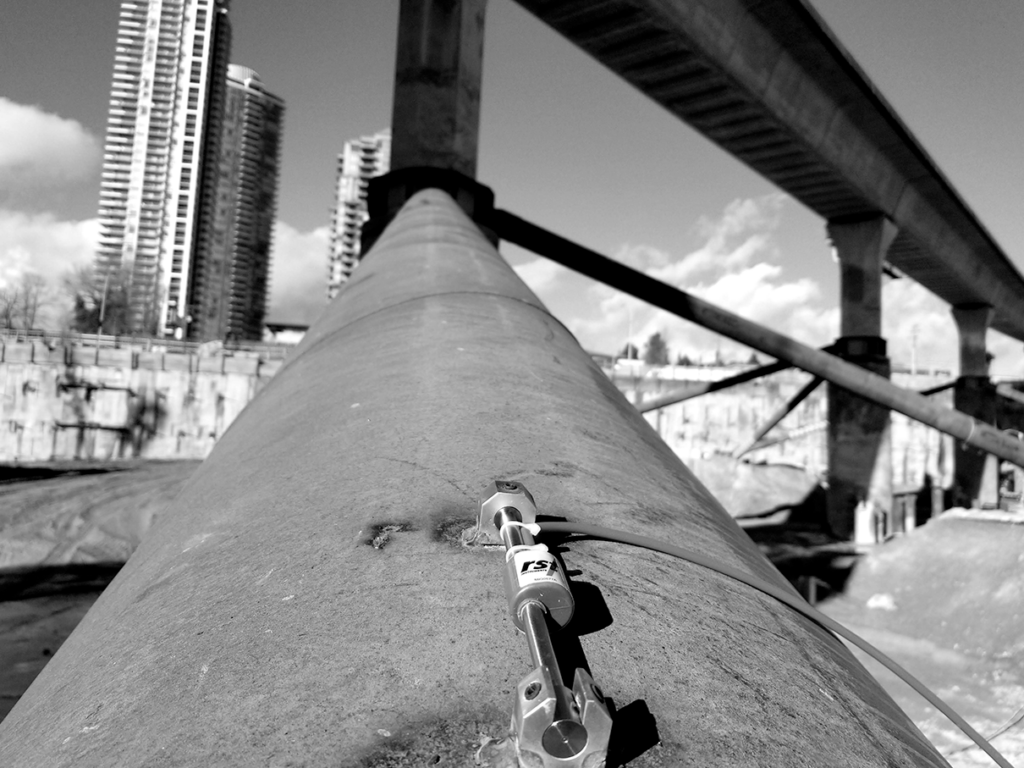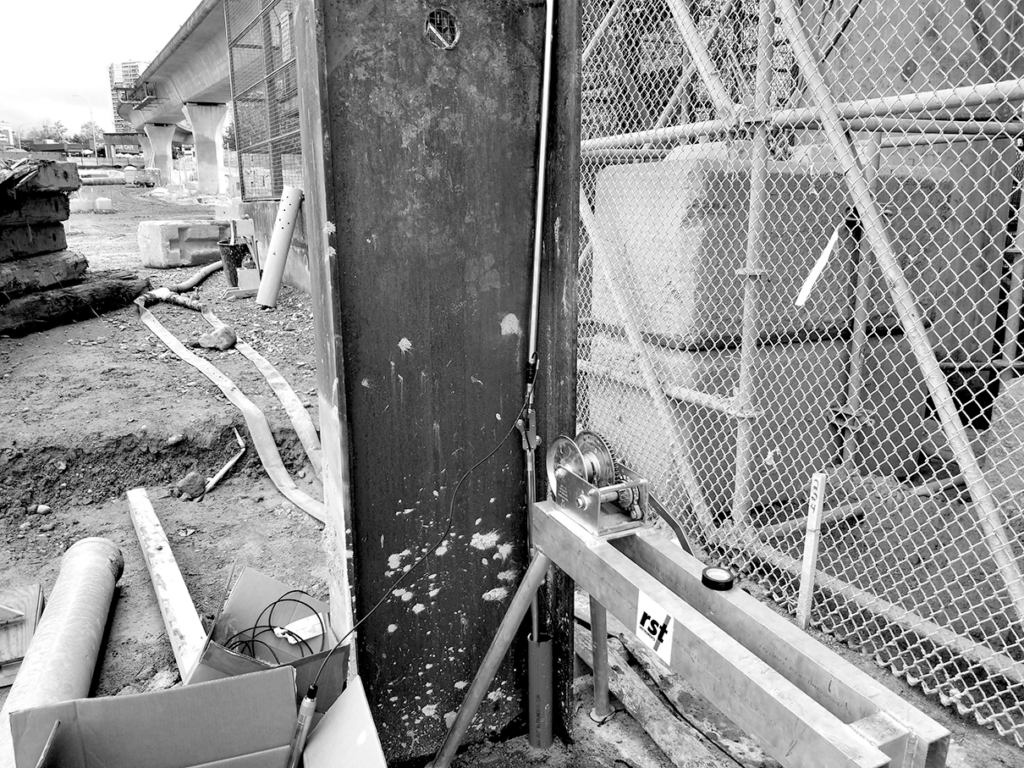Location: Burnaby, British Columbia, Canada
Background
Construction of the Gilmore Place Development required excavation and shoring next to the existing Gilmore Skytrain station and elevated guideway. A baseline monitoring period was used prior to start of construction to collect data on the diurnal/seasonal movement fluctuations of the structures and assess their behavior under normal operating conditions. This helped to establish threshold values/alert levels to be used during the construction period.
Once excavated, continued monitoring was required as construction proceeded.
Objectives
To ensure safety and integrity of the train infrastructure by monitoring movements of the shoring walls and their surrounding structures during construction activities.
Challenges
The project site was bisected by the Skytrain station and elevated guideway, supported by caissons. Other critical infrastructure such as roads and buildings surrounded the project site. The integrity of Skytrain structures and surrounding infrastructure needed to be maintained during construction activities, and movement tolerances could not be exceeded.
The safety of the workers and of the equipment in and around the excavation area was critical, requiring time to react to potential issues identified by instrument data.

Solution
Four pairs (eight total) of vibrating wire crack meters measured structural expansion joints between guideway sections at pier locations.
In-place inclinometers were installed in 17 pile locations next to Skytrain station and guideway piers to monitor lateral soil movements. IPIs were installed within steel members of the secant pile walls throughout the site and were chosen for immediate alerting purposes and due to the locations becoming inaccessible after certain stages of the construction progress.
76 vibrating wire strain gauges were welded on pipe braces and set to measure strain in both tension and compression. Strain data was used to calculate load changes in braces to ensure that the capacity of the pipe brace was not exceeded during pier jacking.
30 vibrating wire load cells were installed during tensioning of soil anchors to confirm anchor testing results, and monitor anchor loading at locations where the bracing structure connected to the shoring wall.
Benefits
The extra challenge of having critical train infrastructure in and over the excavation area required carefully planned construction sequencing, specialized support/bracing designs, and a robust and reliable instrumentation program to provide accurate information to the project team on the performance of the shoring system and train infrastructure during construction. RST provided the various instrumentation that gave the team consistent, reliable feedback in such nuanced conditions.
Results
The safety and integrity of the existing train infrastructure was secured by monitoring movements of the shoring walls and surrounding structures during construction activities.
Baseline monitoring period allowed the project team to decide to increase the alert threshold values that were initially set before the beginning of the project.
The collection of instrument data at regular intervals permitted the project team to monitor for any potential trends/movements that could result in safety concerns and react with appropriate remedial actions.
Ongoing monitoring of instrument data supported the decision to perform the pier jacking procedure.

Instrumentation
In-place inclinometers, vibrating wire strain gauges, vibrating wire crack meters, and vibrating wire anchor load cells.
Completion
Ongoing. Expected project conclusion in 2025.
GET YOUR OWN COPY OF THIS SUCCESS STORY
Speak with an Expert
I’m very happy with the quality of the instrumentation and technical support from RST, as always. They worked with us from the initial stages of the project to ensure that we were fully prepared and equipped to use the RSTAR network for the first time. They delivered everything within the tight project time frame to ensure that there were no delays on site, and the submersible tilt meters looked like new even after over twelve months of being submerged in Thames water!
-Richard Lipscombe, BEng (Hons), Director & Principle Consultant - RL Geotechnical Ltd






